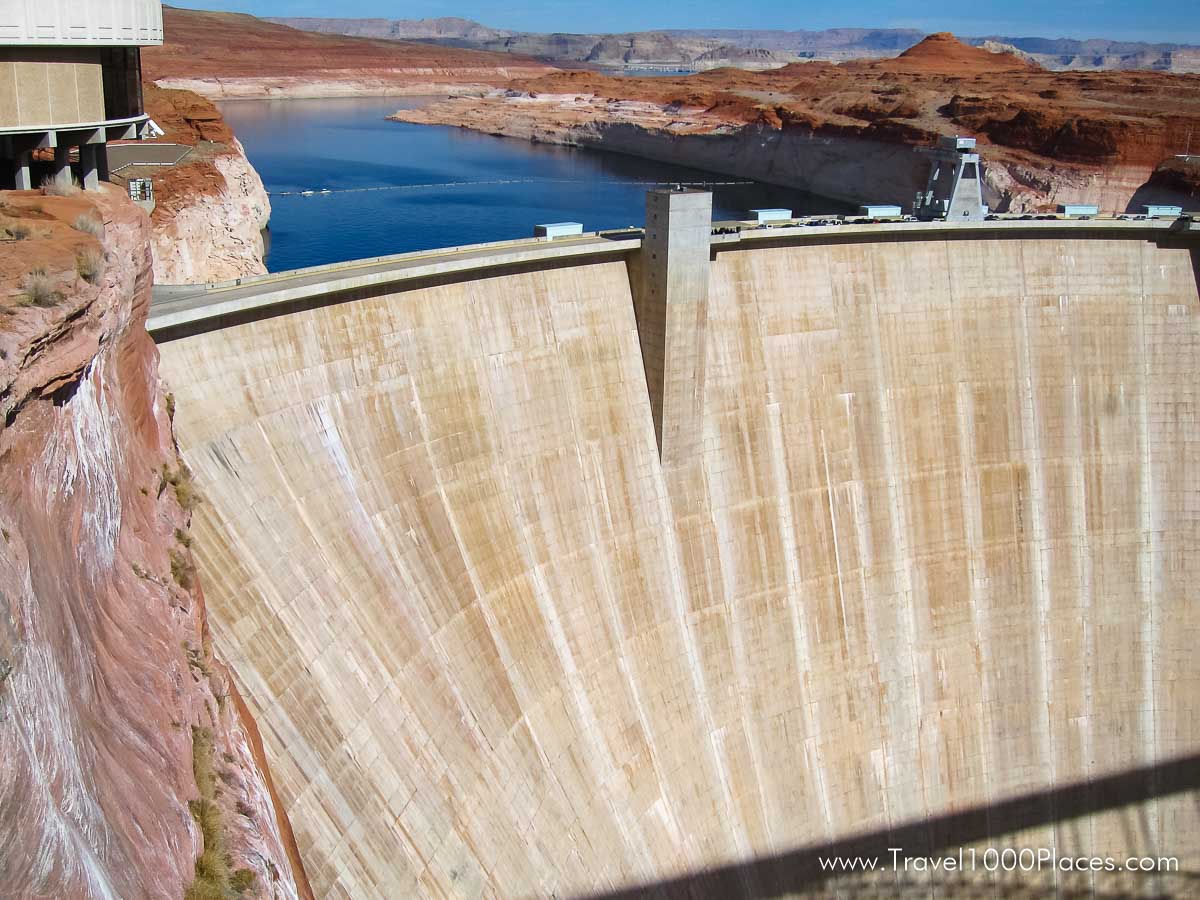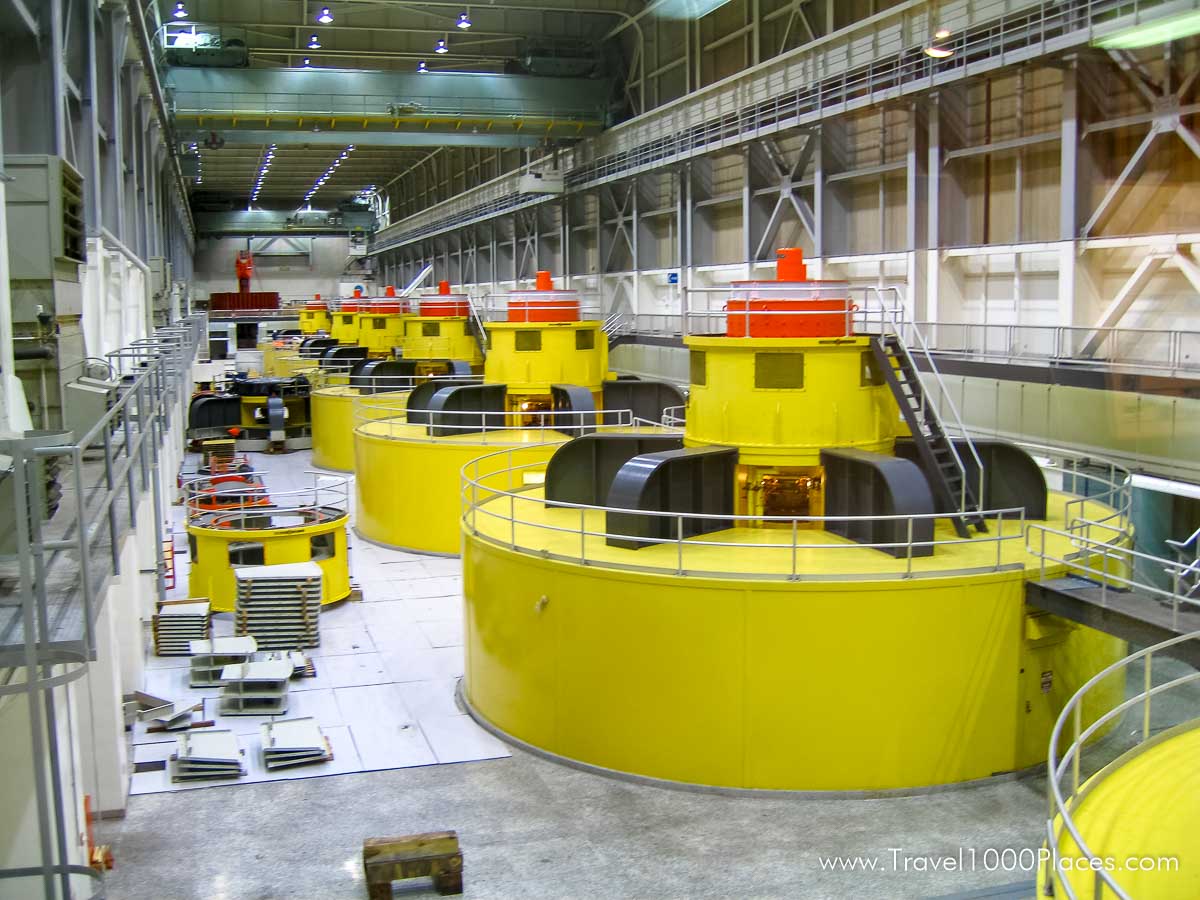![Lake Powell, Glen Canyon National Recreation Area near Page, Arizona [photo: frankschrader.us]](https://www.travel1000places.com/wp-content/uploads/2020/06/Lake_Powell_Glen_Canyon.jpg)
3 top attractions near the city of Page in Arizona: the Glen Canyon recreation area with the dam at Lake Powell, the Horseshoe Bend where the Colorado River nestles around the rocks like a horseshoe, and Antelope Canyon, which offers a unique play of light.
Glen Canyon Dam is located in the City of Page, Arizona. Page is situated ca. 135 miles north of Flagstaff (Arizona) at US 89 (at Jct 98) approx. 9 miles south of the Utah border.
Since Glen Canyon Dam is a part of the National Park System you may enter the recreation area with your National Park Pass or other annual passes issued by the National Park Service, see America the Beautiful Annual Park Pass. Otherwise there’s a fee to enter the park.
Map
The recreation area stretches for hundreds of miles from Lees Ferry in Arizona to the Orange Cliffs of southern Utah, encompassing scenic vistas, geologic wonders, and a panorama of human history.
Additionally, the controversy surrounding the construction of Glen Canyon Dam and the creation of Lake Powell contributed to the birth of the modern day environmental movement.
The recreation area offers opportunities for boating, fishing, swimming, backcountry hiking and four-wheel drive trips.


Glen Canyon Dam
Glen Canyon Dam was authorized by Congress in 1956 to provide water storage in the Upper Colorado River Basin.
The result was Lake Powell, the second largest man-made reservoir in the United States. Lake Mead is the largest.
It took seventeen years for the lake to reach its full pool level of 3700 feet (1128m) above sea level.
Water flowing into Lake Powell is derived primarily from snowmelt from the western slope of the Rocky Mountains. Allocation of water to the Lower Basin states is ensured by the release of water from Glen Canyon Dam. Water releases are planned on a monthly basis to avoid high water spills while benefiting recreation, power generation, and fish and wildlife uses. 85% of the water goes to agricultural production, and a relatively small amount is used in urban areas.
Glen Canyon Dam has created a new Colorado River. Before the dam was built, water temperatures in the river fluctuated seasonally from 80°F (26°C) in the summer to near freezing in the winter.
Now, the water temperature below the dam averages 46°F (7°C) year-round. The Colorado River was once filled with silt and sediment. Now, the river deposits its load of silt as it enters Lake Powell near Hite, Utah. Water released from the dam is clear and the Colorado River is muddy only when downstream tributaries contribute sediment.
As the habitat has changed, so have plant and animal species.
Native fish, unable to survive in the colder water, have left the river. Five species are now endangered. But this new habitat now supports a healthy trout population.
Before Glen Canyon Dam, spring run-offs built and rebuilt beaches and sandbars and scoured away riverside vegetation.
Now, sediment is trapped in Lake Powell and the dam prevents high river flows. Riparian vegetation now grows along river banks, creating habitat for mammals, birds, amphibians, insects, and reptiles.

